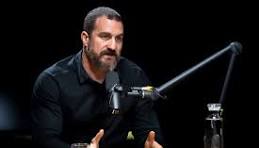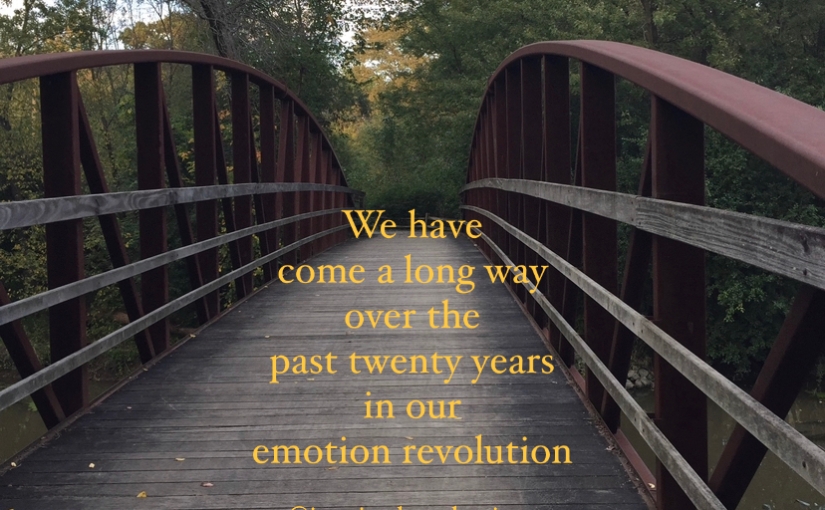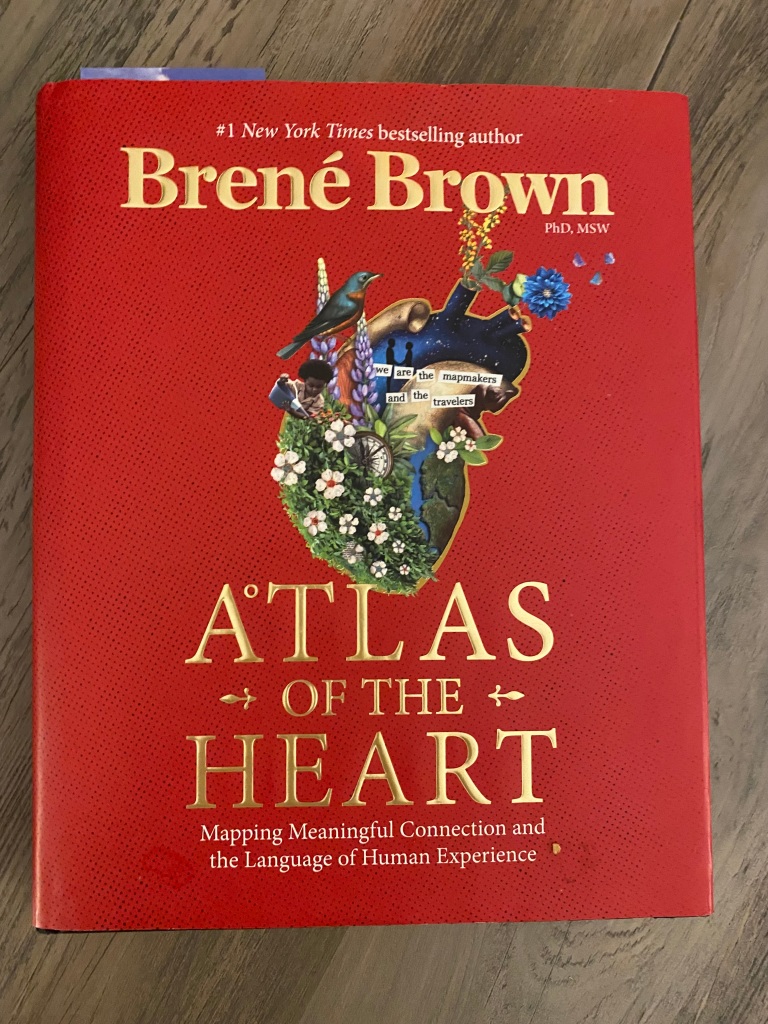My teenaged daughter and I were aboard a dive boat anchored in the Caribbean blue waters of St. Thomas. As we double checked each other’s scuba gear, our fellow divers were clamoring to jump overboard, creating a frenzy of commotion and noisy, disruptive entry splashes we’d been advised not to make. Two compelling thoughts raced through my daughter’s head and she urged me to hurry up. A fear of missing out by not being first — and a concern about not being part of the bigger group — had snagged her attention.
One of our seasoned dive masters was assessing the chaos that had unnecessarily disturbed the calm beauty of this idyllic setting with chagrined disappointment. As I caught his eye, I turned to my daughter and said “Just wait. It will be more than worth it.”
Some divers descended to the ocean floor quickly while others bobbed on the surface, fighting small waves and themselves, making it harder to deflate their lungs and their buoyancy control vests so that they could calmly drift down by the anchor line. Too many people making too many unskillful moves causing silt and debris to cloud the once-clear ocean waters.
Paired diving buddies got separated, visibility was obscured, and the dive masters were diverted from their preferred role of ocean exploring tour guides. Now they had to pivot to become search and recovery teams for disoriented divers and missing gear.
My daughter and I waited a bit longer and then we quietly entered the crystal blue waters just as we had been instructed. As we ever so slowly descended into the ocean, we watched the silt do the same, sinking slowly back to the sandy bottom. We marveled at the rays of sunlight dancing through the now clearer waters illuminating the rich diversity of the coral reef and extensive array of colors in the parrotfish, spotted butterfly, tangs and angelfish.
By this time, the other divers were nearly out of sight, just a fading trail of fins and bubbles off in the distance. Being patient paid off. My daughter and I explored in leisurely, pure delight as the wonders of this mystical undersea world poked their heads back out and returned to their daily routines now that the coast was clear.
We took our time, investigating nooks and crannies, paying attention to the tiniest of sea creatures and intricate textures of coral reef vegetation. Our dive guide coaxed small neon violet and lemon yellow Royal Gramma fish from tube-shaped sponge coral. I could hear my daughter giggling through her regulator.
Our dive guide taught us how to navigate through the reef using our lungs instead of relying solely on our compressed air tanks. We learned to gently rise and descend by using our own inhales and exhales, skillfully navigating without disturbing sand or sea life. We even had a hovering contest to see who could get closest to the ocean floor without actually touching it.
When we returned to the dive boat, my daughter and I discovered that we actually had a longer dive than the rest and surprisingly, we also had the most air remaining in our tanks. The dive master explained to the group that we conserved the compressed air in our tanks by controlling our own breathing. He made a point of telling them that their overly excited and sometimes frantic reactions at the start of their dive predisposed them to erratic breathing; so they relied more heavily on their air tanks than their lungs.
Ironically, we were the last to enter the water, yet we had a longer dive time. However, it wasn’t just more time that made our dive experience so rich – it was being calm and fully present that drew us into discovery and expanded exploration.
When all the divers were safely back on the boat, the dive masters invited everyone to share their experience and use a laminated chart to identify the colorful fish they had seen. As we listened, my daughter had a big realization. By hanging back and being patient, we hadn’t missed out at all. In fact, we had one of our most incredible diving experiences after all the dust had settled. She gave me a sly little wink. There were so many life lessons embedded in this one magical, awe-filled deep sea dive.
Remembering to Use the Skills:
The first lesson that really stands out is how hard it is put into practice the actual training and skills in the “heat of the moment”. All the divers on that boat had to be open water certified in order to even participate in this excursion. They had passed both a written and under water test to earn their dive card. In addition, the charismatic dive masters reviewed in great detail the proper protocol for each dive before anyone entered the water. Nonetheless, all bets were off when the anchor was tossed overboard. Excitement, anxiousness and the strong desire to be first superseded the training and instructions.
This very same experience happens to most of us when we are put to the real life test of using better emotional regulation and relationship skills in the “heat of the moment”. It’s one thing to learn about new tools and quite another to remember to use them. Ironic isn’t it? We have a strong desire to employ better tools and skills when we take a dive into those murky waters of emotional disregulation, disagreement or overwhelm but we can override our best intentions in a heartbeat.
The metaphorical lesson learned from the dive boat experience is that losing control and forgetting our skills can actually create more confusion and muddy up any chance of clearly understanding what is going on. It can also make things more challenging for others than they need to be as we cause unnecessary and distracting disturbances.
The neuroscience lesson is that when we get excited, anxious or overly stimulated, our brains decide we need energy to match the moment. We got a shot of cortisol in anticipation of what is about to go down. Our hearts race, our muscles twitch and before we know it, we are jumping into the ocean or a confrontation, completely disregarding both our knowledge and our intention to use it.
Pause and Get Your Bearings:
When a diver prepares to enter the water, he or she fills their buoyancy vest with a few puffs of air from their compression tank, so they can initially stay afloat and get their bearings before beginning a descent.
The metaphorical lesson from this skill is that taking in a deep breath and then slowly exhaling is the equivalent of filling ourselves with the buoyancy we need to be present in the moment, and to get our bearings before we respond or engage.
The neuroscience lesson is that taking that deep breath is how we check in with our body’s inner workings; easing it from autopilot and the default mode to our own agency and self regulation. That simple calming breath slows our heart rate and clears ambiguous messaging in our brains so that we have more clarity.
We Are All at Different Levels:
Just like the divers on that boat, we are all at different levels of awareness and skills when it comes to putting better relationship tools and emotional self regulation into practice.
A few of the divers may have been newly certified while others may have had 10 to 20 dives under their belt. Since each dive is uniquely different, those people had numerous opportunities to practice their skills in varied conditions and environments. Some divers may be quick studies and are able to easily integrate their education and training into their real life experience of a deep sea exploration. They may be able to relax and enjoy the ocean’s currents quite naturally. Others may be a little unsure, feel tense and have some resistance when the current sways them in a different direction.
The metaphorical lesson is that we need to put our knowledge and tools into practice through real life experiences. The rubber hits the road when we take our training from a predictable indoor swimming pool to the ever-changing eco system of the sea. Practice does not necessarily make perfect, but it vastly improves our confidence in our ability to skillfully use our knowledge and tools in a variety of circumstances and conditions.
The neuroscience lesson is that we actually create new neural networks in our brains when we begin to use new skills and tools. It is the consistent practice that moves the needle. We can practice in low stakes situations to gain more confidence with setting boundaries, staying calmer, listening to understand, and not getting attached to the outcome. As we become more skillful with these tools, we will feel better resourced to use them effectively in our most valued relationships.
Becoming Sturdy Leaders:
When I was first learning to scuba dive, I always felt safest with a seasoned diver as my dive buddy. Being with others who have more experience and are highly skillful is how we learn through osmosis and real life role plays. We pay close attention and keenly observe their actions and choices and most importantly, the subsequent outcomes.
Later, when I had earned my certification and my kids wanted to learn to scuba dive, my role shifted from student to teacher. My attention was now on demonstrating and explaining things in a way they would understand. I also felt a strong sense of responsibility, much like we do when we teach our kids to drive a car. Staying calm while exchanging our dive gear on a platform 60 feet deep in a cold quarry was paramount.
The metaphorical lesson is that we are teaching others, and most especially our kids, how to navigate life and relationships using the skills and tools we’ve honed. Our own practices, coping skills and experiences influence how and what we teach. We wouldn’t put our kids behind the steering wheel of our SUV and employ the same teaching strategies that we often unconsciously resort to with temper tantrums, whining and confrontation. Parenting guru, Dr. Becky Kennedy, refers to our parental role in teaching life skills and emotional integration as “sturdy leadership.” Sturdy leadership is what a dive master provides. When we are sturdy leaders for our kids and for others, we help them feel safe, find calm and develop skills for emotional regulation and resilience.
The neuroscience lesson is that we co-regulate and co-create with each other. One cool, calm, collected sturdy leader helps others return to their emotional baseline faster. Then with clear heads and more emotional regulation, we can co-create a better situation and outcome.
Setting a Positive Intention:
Those affable and charismatic dive masters created a sense of camaraderie, fun and curiosity with a group of strangers on a dive boat. They delivered their instructions for each dive with warm smiles, a little humor and attention to detail. Their goal was to keep us safe and set us up for the best experience possible.
Setting a positive intention provides the framework and guardrails for what might be considered two opposing truths: Being and feeling safe – and exploring uncharted territory.
The metaphorical lesson is when we have to engage in a hard conversation, deal with a difficult situation or person, we can also lead with a statement of positive intention. Brene Brown has long taught us that clear is kind; that we can be generous in believing that others are doing the best they can in the moment when we stay in our integrity and set boundaries about acceptable language and behaviors.
A statement of positive intention is how we enter these challenging conversations. We state clearly and genuinely that we care deeply about a person and our relationship with them. It is our “why” for a desire to resolve our differences or a misunderstanding. A statement of positive intention can diffuse the tension and resistance that often prevents us from having these hard conversations. We offer kindness, compassion and respect – the ingredients to feel safe enough to be vulnerable and truthful. Reframe these hard conversations as a “search and recovery” opportunity.
The neuroscience lesson is that we often get in our own way when it comes to conflict resolution because of the stories we have told ourselves to make sense of things that happened in the past. Our brains are prediction machines relying on a historical database. In our efforts to protect ourselves from being hurt or disappointed yet again, we resist opening up to gaining helpful context, nuance and perspective. When we are open to “listening to gain understanding”, we are in essence installing an “update” to our data base. Taking in new information with context we may not have been aware is how we free ourselves from craggy old beliefs and narratives that snag and entangle us.
On Dry Land:
When my teenaged children were learning to scuba dive, I had a lot of friends who chided me for letting them do something so risky. At the time, I shared with those concerned friends that we also teach our kids to drive, which is equally risky and something we all do nearly every day. Kids take driver’s ed, they study and pass exams to get a learner’s permit and we parents take them out to practice in parking lots and less traveled rural roads. We give them the tools and the practice they need to earn that driver’s license and we celebrate the milestone of turning over the car keys and letting them venture out on their first solo drive.
How remarkable is it then that we really don’t give much serious contemplation to the emotional and relational skills we need the most and that we will use every single day for the rest of our lives?
We need sturdy leaders to teach us how to self-regulate, to learn from our internal dashboard of emotions and experiences, to use self-awareness, healthy coping skills and relationship tools to navigate all parts of life.
Today, we are fortunate to have incredible new science-based insights and knowledge about the importance of emotional integration, the inter-connectedness of our brain and body systems, and a plethora of resources to support better ways of showing up for ourselves and others.
The Takeaways in Life Lessons from the Sea:
Find the “dive masters” that are the sturdy leaders that resonate with you. Study and learn from them. Acquire some new and improved relationship skills and play around with them. Start with low stakes situations to build confidence.
Find some seasoned “dive buddies” to help you hone your ability to use more effective tools. Friends, family members and mentors can become these dive buddies for you. Seek their wisdom, ask questions and ask for help. Swap stories and experiences to deepen your understanding.
Don’t forget to put all that education and study hours into actual practice. Use that calming breath to fill your life vest with some air, get your bearings and then enter an interaction grounded and calm. Remember to use the new skills you are learning. Put them to the test with some patience and compassion for yourself and others.
After each new “dive experience”, take some time to reflect on how it went. How did you feel and what did you learn? Were you able to listen to understand, validate someone else’s experience or perspective, find some common ground? Did you feel more emotionally balanced and recognize that this helped others calm down faster? Taking the time to do a thoughtful de-briefing reinforces your learning and hones your new skills.
A Measure of Success:
Imagine all the positive changes that are sure to come when we collectively begin to acquire and use better emotional and relationship skills. These new tools and skills will be transferrable to all aspects of our life; fewer self-made obstacles and less complicated relationship entanglements.
After all, look how many of us can competently drive a variety of vehicles on a busy highway or skillfully navigate a crowded parking lot.
We can teach each other complex navigational skills.
NOTEWORTHY RESOURCES:
















